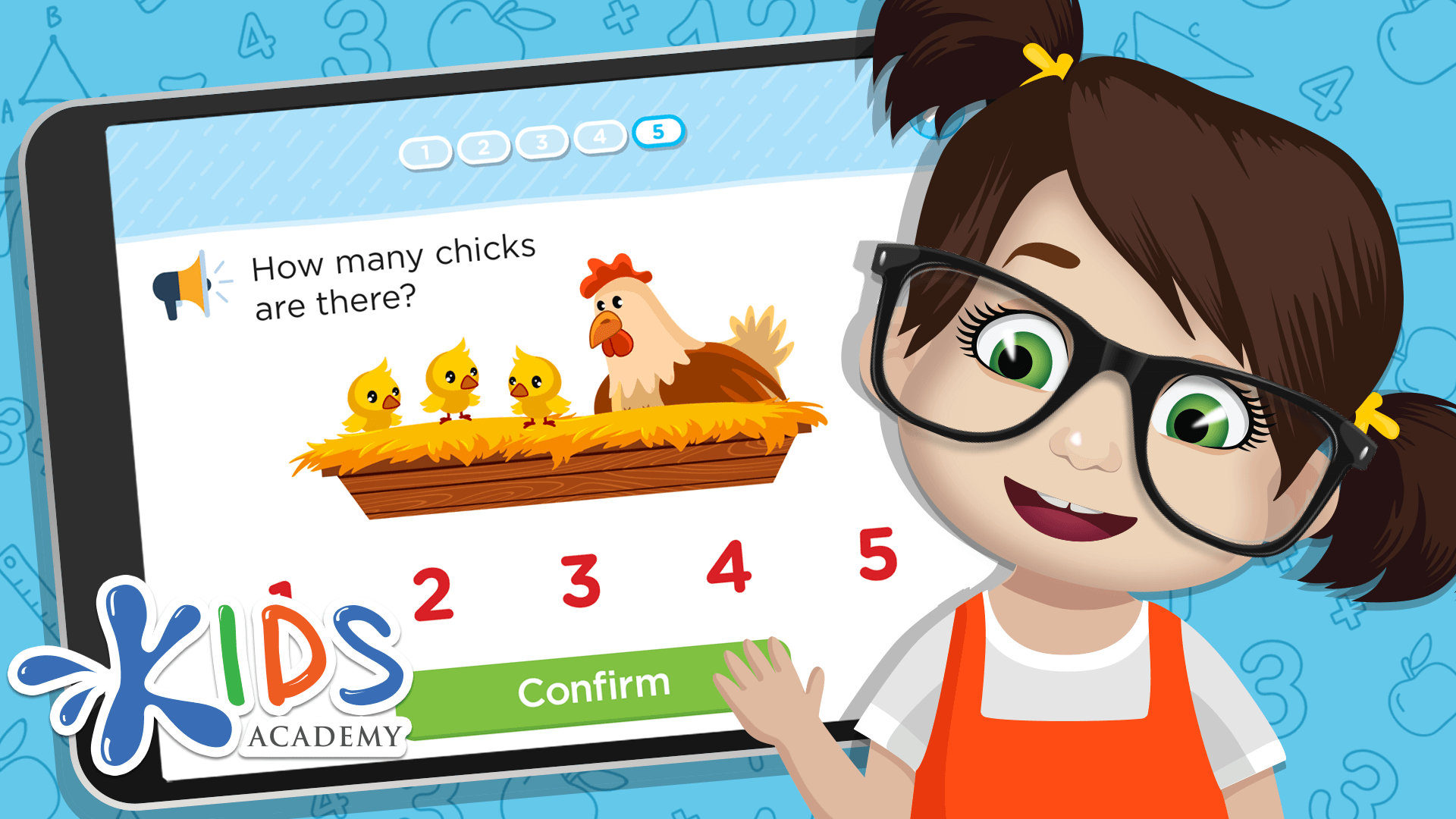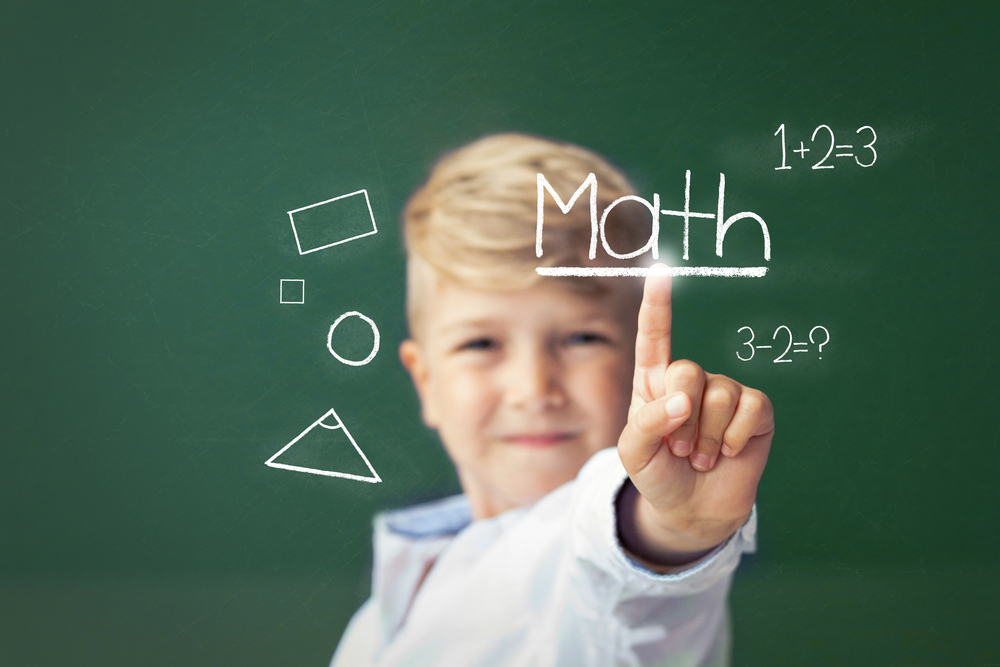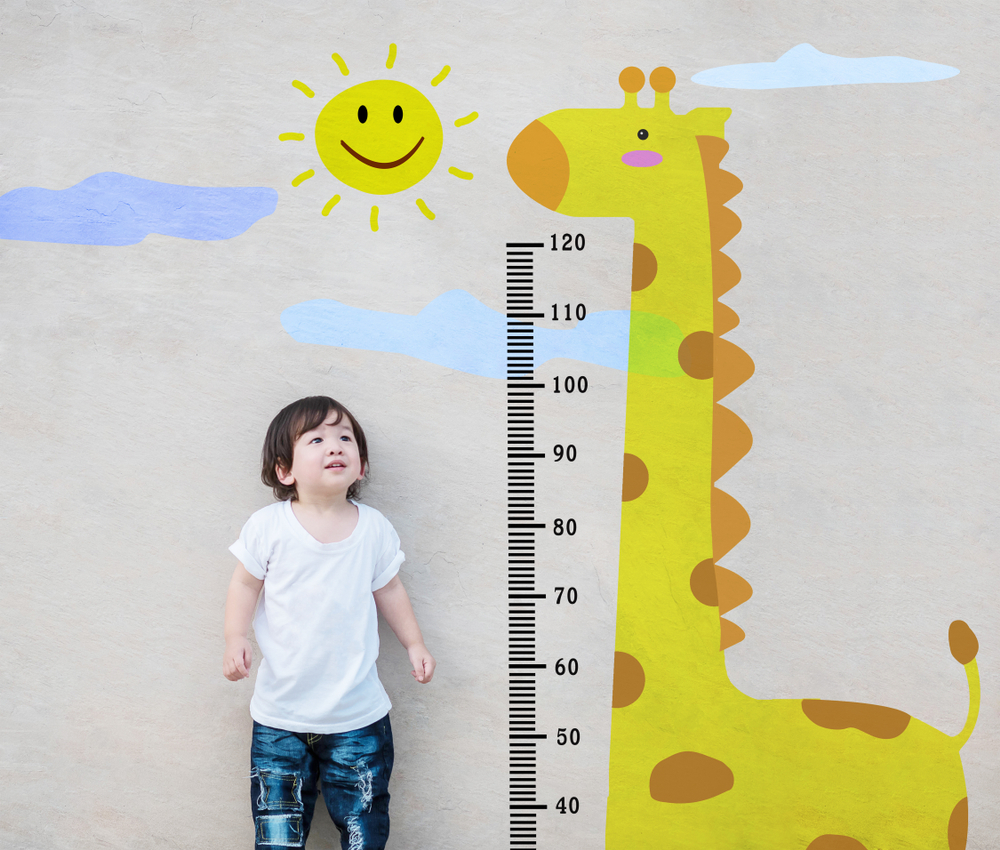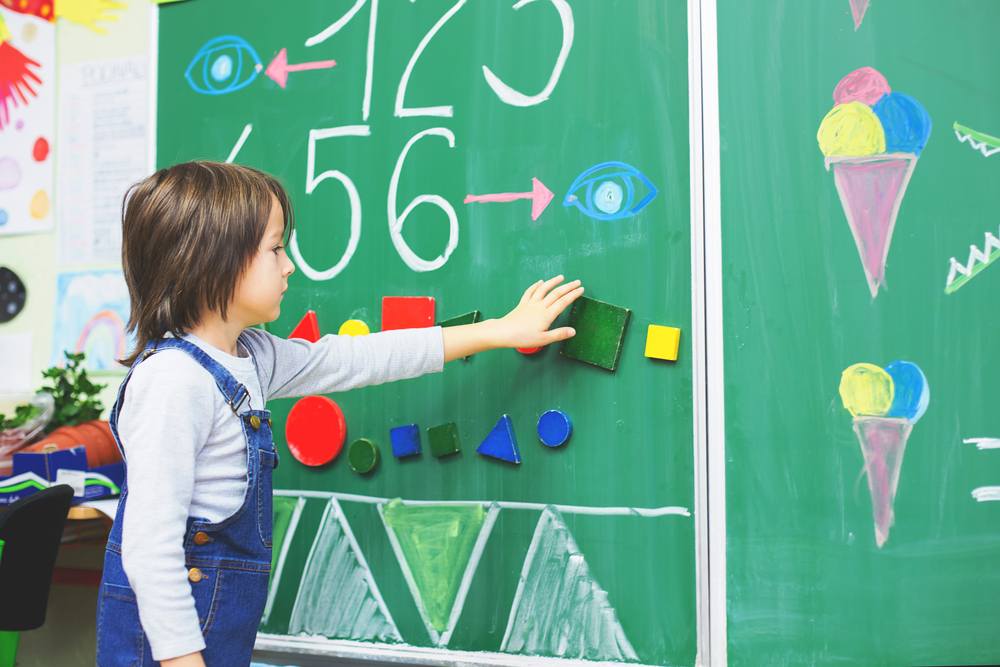Time recognition Measurement Worksheets for Ages 3-8
3 filtered results
-
From - To
Enhance your child's time-telling skills with our "Time Recognition Measurement Worksheets for Ages 3-8." Perfect for early learners, these printable resources make learning to read both digital and analog clocks fun and engaging. Our carefully designed worksheets help children understand the concept of time, from identifying hours and minutes to recognizing various times of the day. Suitable for preschoolers through early elementary students, these activities boost confidence and proficiency in a vital lifelong skill. Explore a wide range of exercises that support incremental learning and make mastering time a delightful journey! Download now for an educational experience your child will enjoy.
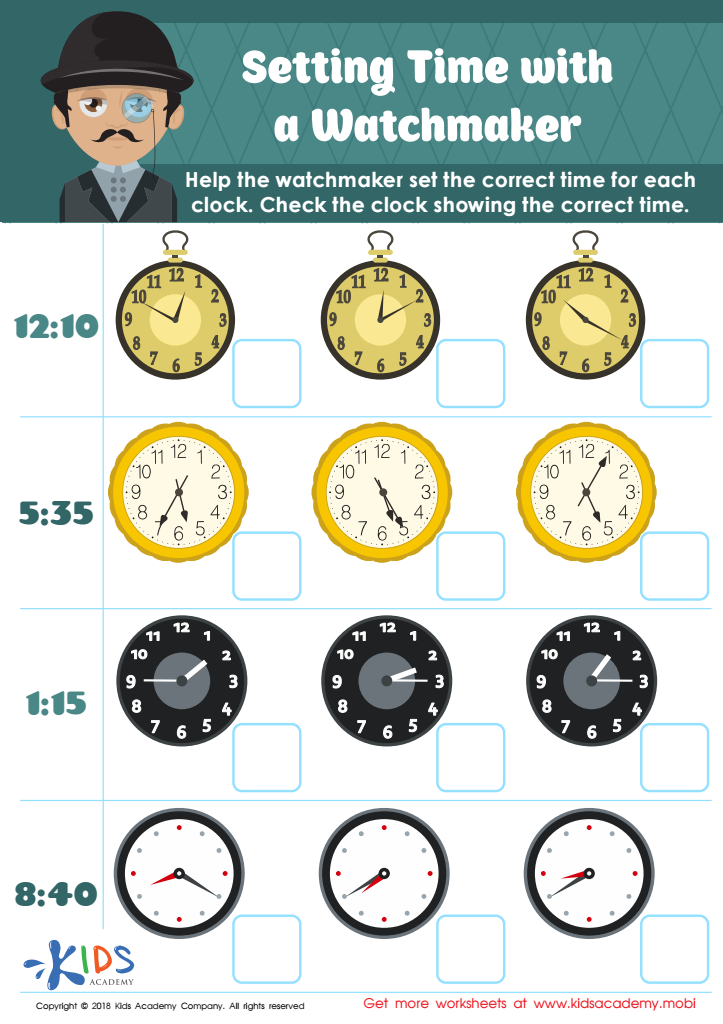

Setting Time with Watchmaker Worksheet
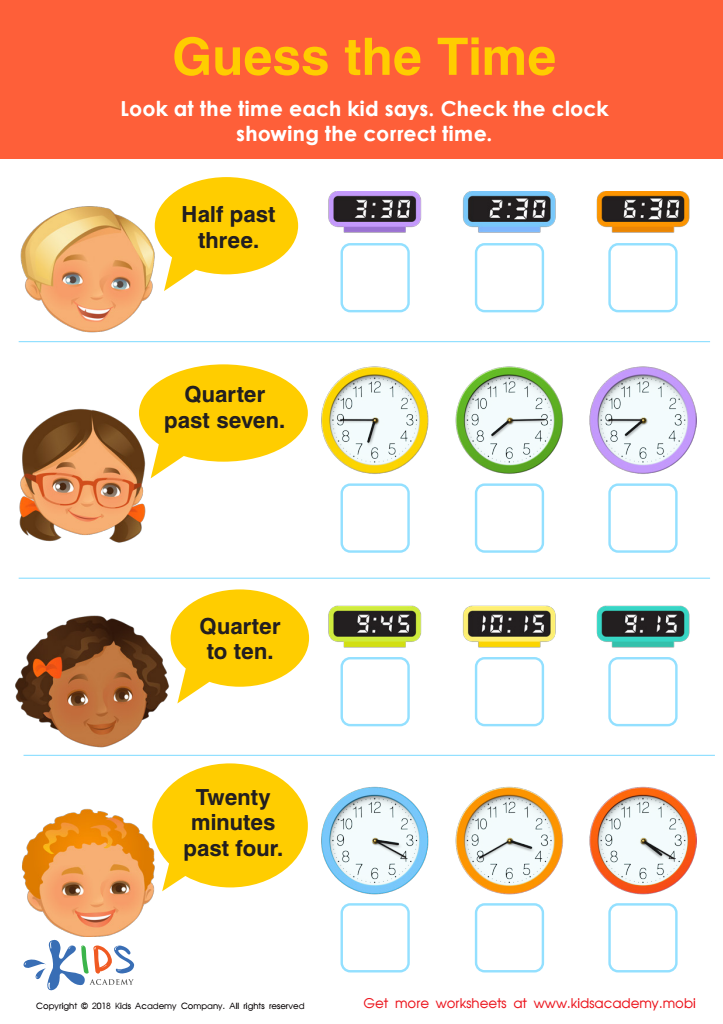

Guess the Time Worksheet
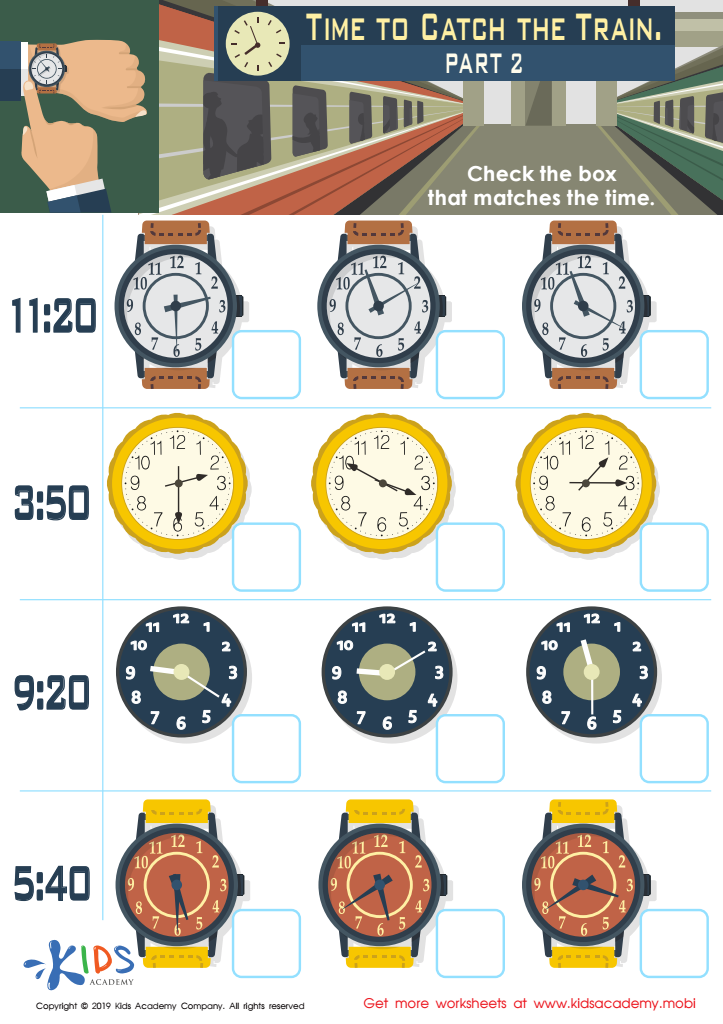

Time to Catch the Train Part 2 Worksheet
Time recognition and measurement are essential skills for young children, typically between the ages of 3 and 8, as they form the foundation for many aspects of their daily lives and future education. Parents and teachers should care about teaching these skills for several reasons.
Firstly, understanding time helps children develop a sense of routine and structure. Knowing the times for school, play, meals, and bedtime instills discipline and helps them feel secure and organized in their day-to-day activities.
Secondly, time recognition is closely intertwined with numeracy skills. Learning to read a clock and understanding seconds, minutes, and hours bolster children's mathematical abilities, promoting logical thinking and problem-solving skills. It's an early step towards more complex concepts like fractions and time-related word problems they will encounter in later schooling.
Furthermore, an awareness of time aids children in developing time management skills. These skills are crucial for independence and self-regulation, helping them prioritize tasks and understand the concept of deadlines.
Finally, recognizing time improves children's social interactions. Punctuality and being aware of time are important at school and in social settings. Mastering these skills early contributes to becoming respectful and considerate individuals.
Overall, time recognition and measurement are foundational skills that support children's intellectual growth, social development, and practical life skills.
 Assign to My Students
Assign to My Students


